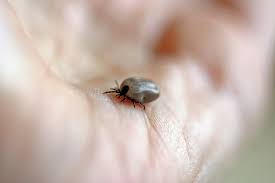Lyme disease remains one of the most widespread tick-borne infections affecting Americans today. The problem that has long puzzled scientists, physicians, and researchers, is finding a reliable diagnostic framework to detect Lyme disease in its earliest stages. It’s endemic in certain parts of the country, including Wisconsin, Minnesota, the Mid-Atlantic region and New England, which produces 95 percent of reported cases. The bacterium Borrelia burgdorferi primarily causes Lyme infection.
Deer ticks (black-legged ticks) are the primary carriers of the Borrelia burgdorferi bacterial pathogen. Transmission occurs when these ticks bite or latch on to someone’s skin. It leaves physical symptoms characterized by circular rashes that resembles a donut or bull’s eye sign. While some infected patients develop physical symptoms, an estimated 20 – 30 percent do not. The B. burgdorferi bacteria is quite invasive when it enters the bloodstream, and will eventually migrate to connective tissues, the sensitive nervous system, and the heart.
Standard diagnostic tests generally identify Lyme disease when it’s in an advanced developmental stage. The pathogens are most reactive to antibiotics that treat Lyme infection during the prodromal phase. A recent Science News article, reveals that scientists have found a breakthrough formula to effectively diagnose Lyme disease when it is in the embryonic stage. Now, physicians can gather evidence of Lyme-causing bacteria activity in the blood, where microbiologists decipher clues from an immune response. It exploits two experimental methods to provide definitive diagnosis: identifying Lyme-specific proteins and observing how antibodies react to the invading pathogens.
Today, scientists and expert doctors are studying genetic anomalies influenced by Lyme infection. The Lyme test model that they’re using allows them to study cellular activities, particularly that of white and B cells that release antibodies that fight foreign bacteria, including Lyme disease. It produces chemicals such as interferon gamma, which scientists are using to detect Lyme infection after treatment.
The bacteria sometimes linger after physicians administer multiple courses of treatment to an infected patient. With this new standard for testing Lyme, they can know how effective a particular treatment is. The count of T cells in the body normally diminish if treatment was successful. T cells also combat invading bacteria in the body. Researchers are continuing their research to develop greater insight into Lyme disease, which will help them formulate effective cure to stop the virus indefinitely. With the continued advancement of medical technology in genome sequencing, healthcare practitioners strive to improve Lyme diagnostic testing.



